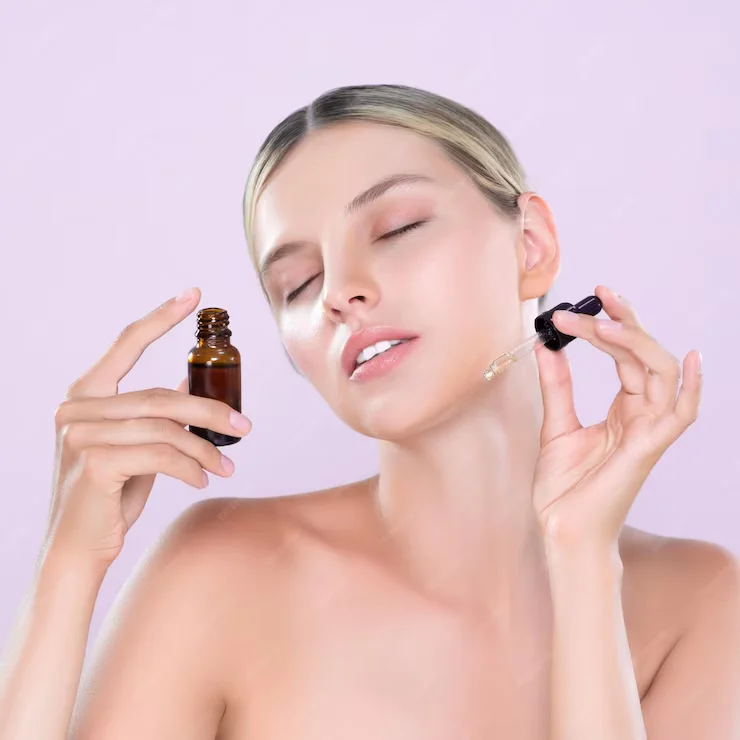14 Must-Follow Winter Skin Care Tips for Protecting and Nourishing Skin All Season
As a dermatologist with over a decade specializing in winter and environment-related skin care conditions, I teach patients proactive skincare to shield from cold, dry air wrecking havoc on the complexion. Without preventative measures, the plummeting temperatures, biting winds, and low humidity typifying the winter months compromise skins moisture barrier causing irritation, itching, flaking and even infection vulnerability if skin cracks or bleeds.
In this guide informed by both my clinical experience and scientific research in skin health, I share my top 14 must-follow winter skincare best practices. Consider these essential cold-weather commandments for keeping your complexion happy and healthy despite the elements plotting against it!
1. Moisturize Daily with Rich Creams
Skipping moisturizer even for a day leaves skin unprotected from dehydration and premature aging. As the central winter skin care mantra declares: Hydrate, hydrate, hydrate! Quench parched skin by applying nourishing moisturizers morning and night. In winter, swap light lotions for richer creams, ointments and butters containing ingredients like:
- Hyaluronic acid to help skin attract and retain moisture
- Ceramides to reinforce lipids protecting skin’s barrier
- Shea butter, plant oils and waxes to seal in existing hydration
For severely dry areas like hands and feet, supplement daytime care with ultra-emollient salves overnight. If flaking persists, use alpha hydroxy acid lotions to exfoliate dead cells so moisture better penetrates.
2. Gently Exfoliate 1-2 Times Per Week
To allow rich moisturizers better absorption, lightly exfoliate the buildup of dead skin cells sloughing off over winter. Try any of these options 1-2 times weekly:
- Konjac sponges with a warm water soak
- Soft microfiber cloths massaged gently over damp skin
- Cleansing scrubs with jojoba beads or finely ground nuts
Skip salt, sugar and acid peels in winter as these overly strip. Always keep exfoliation touch gentle – rubbing harshly further aggravates delicate dry skin.
3. Deploy Humidifiers for Moisture Replacement
Indoor heat saps humidity from the air, leaving it severely dry. Counteract the moisture-depletion by using humidifiers for added air hydration and relief. Cool mist options minimize potential mold concerns.
Aim to keep indoor relative humidity around 40% for ideal skin comfort. Track with a hygrometer and tweak humidifier settings accordingly.
4. Stick to 5-10 Minute Lukewarm Showers
Long steamy showers may seem comforting amidst the cold yet hot water strips natural oils. Set a timer for lukewarm 5-10 minute showers instead. Limit the temptation by keeping bath accessories within quick reach!
5. Immediately Apply Body Moisturizers After Bathing
Post-cleansing while skin remains damp allows lotion and cream hydrators better absorption. Pat gently to avoid irritating fragile dry skin. Layering gel or lotion underneath topping with a rich butter or ointment seals maximum moisture.
6. Shield Hands With Gloves Outdoors
Braving cold, wind or snow without gloves leaves hands cracked and raw. Always cover hands before facing winter elements then liberally apply moisturizers immediately afterwards to protect skin’s integrity.
When driving, try cotton gloves under thicker ski gloves to combat drying heating vents. Reapply hand cream religiously after washing hands to prevent chapping.
7. Double Down With Water-Based Then Cream Moisturizers
Quenching thirsty complexions requires using multiple hydrators. Apply antioxidant serums featuring hyaluronic acid first to attract moisture to the surface. Follow with rich emollient creams, lotions and balms to lock in hydration all day.
Facial oils like apricot, rosehip, argan and marula also boost skin elasticity during cold exposure. Use at night and rise with a soft, dewy glow!
8. Pick Gentler Cleansers Over Foaming Formulas
Many cleansers contain detergents and soap that deplete lipid moisture and disturb skin’s acid mantle. To avoid stripping, use creamy non-foaming gel cleansers instead of lathering types. Limit use to only nightly or switch to micellar water instead of harsh face washes.
9. Eat Skin-Strengthening Foods All Season
Just as dry scalp and hair craves moisture-rich foods, so does your skin. Opt for ingredients containing ample hydrating and antioxidant nutrients:
Hydration All-Stars: Cucumbers, watermelon, grapefruit, iceberg lettuce
Healthy Fats: Avocado, nuts, salmon, olive and coconut oil
Antioxidants: Colorful berries and pomegranates, dark leafy greens, carrots, tomatoes, citrus fruits
Staying well-hydrated by sipping herbal teas, bone broths and infused waters keeps the body moisturized inside and out.
10. Vigilantly Apply Lip Balms and Eye Creams
Neglecting lips and the delicate eye area leaves them vulnerable to painful cracking, irritation and premature aging. Stay diligent applying moisturizers designed specifically for lip and eye zone needs multiple times per day. Keep tubes everywhere – desk, bag, nightstand, etc.
For nighttime recovery, select heavier occlusive balms sealing in hydration. Look for brightening vitamin C and peptides to combat fine lines and crepiness over time.
11. Mist Hydration Quick Fixes Throughout the Day
Refresh, rehydrate and soothe on-demand dryness by misting your complexion with hydrating facial sprays. Keep a mini bottle accessible to spritz your face during the day if feeling tight or flaky. Hydrating heroes include floral waters, electrolyte rich thermal spring waters and antioxidant-packed green teas.
12. Scale Back Hot Beverages
That steaming mug of coffee may temporarily thaw frozen toes yet the heat further dehydrates skin and body long-term. When battling dry skin, cap hot drinks at 1-2 per day max.
Switch the opposite extras to room temperature water infused with citrus fruits naturally enhancing moisture levels from the inside out.
13. Use Muslin Cloths or Konjac Sponges vs Salt Scrubs
While citrus-y salt and sugar body scrubs seem tempting for scrubbing away flaky skin, the coarse grains prove too abrasive for delicate dry skin. Instead, improve surface texture and aid moisturizer penetration by gently massaging the skin using muslin cloths or soft konjac sponges.
14. Apply Deeply Nourishing Facial Oils Overnight
Plant-based oils offer a hydration holy grail for stressed complexions. Natural oils reinforce the lipid moisture barrier while combatting inflammation.
At bedtime when skin renews itself fastest, massage in antioxidant and fatty acid rich oils like apricot kernel, olive squalane or rosehip seed. Awake to radically softer, smoother skin in the morning.
Skincare experts also recommend using nutrient-packed facial sheet masks weekly for an ultra-nourishing treat. Look for brightening vitamin C, soothing oatmeal or deeply hydrating hyaluronic acid.
By following these winter skincare commandments diligently despite plummeting temperatures and lower humidity levels outdoors, you defend against redness, irritation, breakouts and premature aging accelerating over the cold months. Consider incorporating these protective practices into your regular routine so you look and feel your glowing best all winter long!
Let me know if you have any other dry skin or cold weather related skincare questions I can address. Stay warm and moisturized!
People Also Ask:
How can I make my skin glow in winter?
Use vitamin C antioxidant serums under moisturizers to boost radiance and support collagen production. Exfoliate gently 1-2 times per week for enhanced product penetration. Massage in nourishing facial oils overnight when cell turnover peaks. Drink plenty of water and eat a “glow” diet rich in colorful produce.
What is the best moisturizer for very dry winter skin
Look for extra-strength moisturizers containing ingredients like hyaluronic acid, ceramides, shea butter, glycerin, dimethazone, lanolin and plant-based oils like olive, coconut and jojoba. Seal hydration in using an occlusive like petroleum jelly on top.
Do cold temperatures actually damage skin permanently?
While temporary irritation, chapping and changes in pigmentation can occur in winter, cold exposure alone doesn’t cause permanent skin damage unless secondary factors like windburn or dehydration compound the effects leading to infection vulnerability. Still, lower temperatures accelerate aging so ideal to protect skin.
How do you treat common winter skin irritations like eczema and psoriasis?
Protecting the skin barrier using thick emollient creams and ointments prevents conditions like eczema and psoriasis from flaring over winter. Talk to your dermatologist about prescription steroid creams to calm inflammation and antihistamines for associated itching. Soaking in colloidal oatmeal baths also soothes.
What vitamins and supplements support winter skin health?
Vitamins C, E and key omega fatty acids reinforce the skin barrier while improving hydration and collagen production. Consider a multivitamin containing around 100% RDA amounts alongside antioxidant-rich berry supplements or fish oil capsules. Apply vitamin C and E serums topically too.

